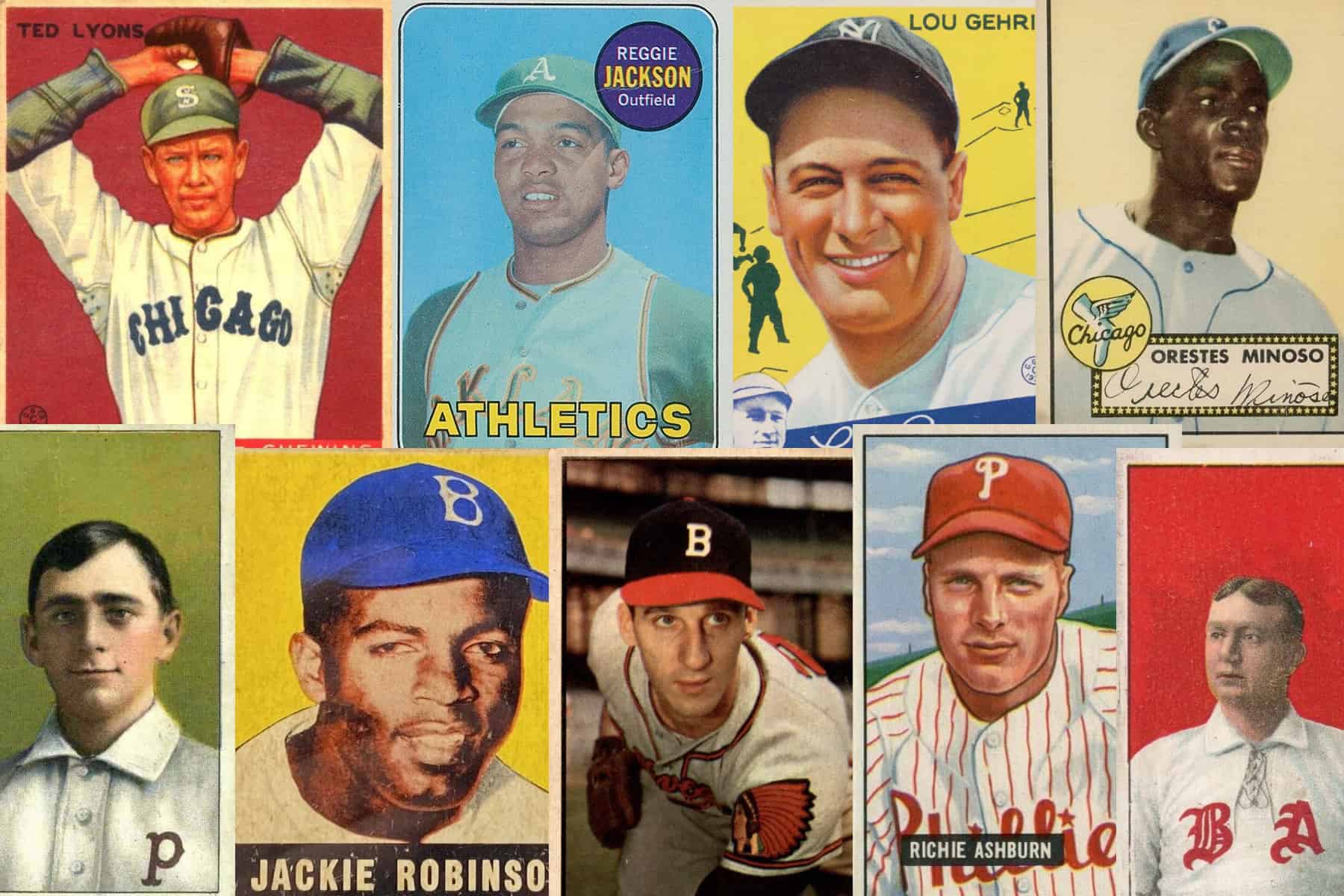Baseball cards are amazing collectibles because they freeze time, preserving players and events in cardboard form. But, like any treasured possession, baseball cards are not immune to the effects of time. Vibrant colors that bring memories to life also face the inevitable threat of baseball card fading.
As a collector, understanding the science behind the printing process, the factors that contribute to color deterioration, and the effective strategies for preservation is crucial. By taking proactive steps, you can become a responsible steward of your collection, ensuring that the colors of your cherished baseball cards continue to evoke memories and spark joy for generations to come.
A Scientific Look at Printing and Color Stability

The visual feast presented on a baseball card is the result of a complex interplay between printing inks, cardstock materials, and printing techniques. Chromolithography, a technique prevalent in the early days of card production (late 19th century to mid-20th century), employed multiple stone lithographic plates, each inked with a different color, to create the final image. Later techniques like offset printing utilized CMYK (Cyan, Magenta, Yellow, and Key Black) inks to achieve a wider range of colors.
The selection of inks plays a pivotal role in color stability. Traditionally, inks were manufactured using pigments suspended in a binder. Pigments, consisting of light-absorbing and reflecting particles, determine the perceived color. Binders, typically oils or resins, hold the pigments together and adhere them to the cardstock.
The quality of both pigments and binders significantly impacts color longevity. Lightfast pigments, such as certain carbon blacks and iron oxides, exhibit superior resistance to fading compared to their less stable counterparts. Similarly, binders formulated with robust polymers offer enhanced protection against degradation.
Factors Contributing to Color Fading
Several factors can conspire to steal the vibrancy from your baseball cards:
Light Exposure
Light, particularly ultraviolet (UV) radiation, is the arch-nemesis of color stability. UV light interacts with pigments, causing them to break down and lose their ability to absorb specific wavelengths of light, resulting in perceived fading. Sunlight and fluorescent lighting are significant sources of UV radiation, highlighting the importance of storing cards in UV-protective sleeves and enclosures.
Temperature and Humidity

Excessive heat and humidity can accelerate the degradation of inks and cardstock. High temperatures can cause binders to become brittle and crack, while high humidity can promote mold growth and ink adhesion issues. Maintaining a cool, dry storage environment (ideally, around 70°F and 50% relative humidity) is crucial for optimal preservation.
Improper Handling
Frequent handling of cards can lead to physical damage, including scratches and smudges, which can detract from their visual appeal. Additionally, fingerprints and oils from human skin can transfer onto the card surface, potentially accelerating chemical reactions that contribute to fading. Employing clean gloves while handling cards and minimizing unnecessary contact are essential practices.
Atmospheric Pollutants
Air pollutants, such as ozone and sulfur oxides, can react with pigments and binders, leading to discoloration and fading. Enclosing cards in archival-quality materials that minimize exposure to pollutants is recommended.
How to Prevent Baseball Card Fading
While the passage of time is inevitable, proactive measures can significantly slow down the baseball card fading process and extend the lifespan of your cards’ colors:
UV Protection

Utilize archival-quality sleeves and toploaders made from UV-filtering materials such as Mylar or polypropylene. These materials significantly reduce UV light transmission, safeguarding your baseball cards from the detrimental effects of sunlight and artificial lighting.
Proper Storage
Store your cards in a cool, dry, and dark environment. Opt for acid-free cardboard boxes or trading card storage cabinets to shield them from light, dust, and pollutants. Avoid storing cards in basements, attics, or garages, where temperature and humidity fluctuations are common.
Minimize Handling
Handle baseball cards with clean gloves whenever possible to minimize fingerprint oils and physical damage. Refrain from touching the card surface directly and hold them by the edges.
Professional Grading
Consider professional grading for valuable cards. Reputable grading companies encapsulate baseball cards in inert, sealed holders that provide superior protection from environmental factors and physical handling.
Scientific Advancements in Restoration and Preservation

The field of baseball card conservation is constantly evolving, with new technologies and methodologies emerging to address color fading and other deterioration issues. Some promising areas of research include:
Digital Restoration Techniques
Advancements in digital imaging software allow for the non-invasive correction of minor fading and imperfections. However, ethical considerations and potential loss of historical value necessitate careful evaluation before employing such techniques.
Development of Novel Pigments and Binders
Ongoing research focuses on creating inks with enhanced lightfastness and utilizing more stable binder formulations. These advancements can potentially improve the color longevity of future generations of baseball cards.
Conclusion
Preserving the vibrant colors of your baseball cards requires a multifaceted approach. By understanding the scientific principles behind printing and color degradation, coupled with implementing effective storage and handling practices, collectors can ensure their cherished collectibles retain their visual splendor for years to come.
Remember, even with the best efforts, some degree of color fading is inevitable over extended periods. However, by adopting these strategies and staying informed about advancements in preservation techniques, you can maintain the vibrancy of your collection for years to come.
